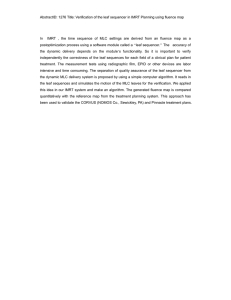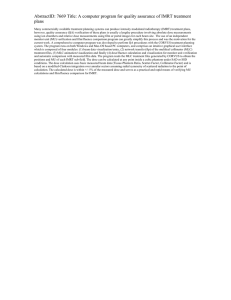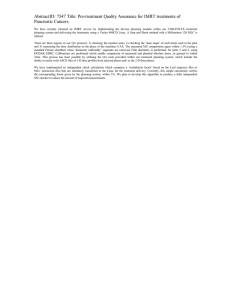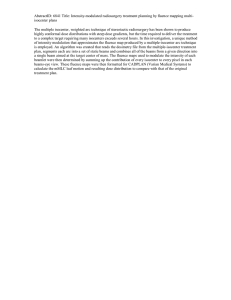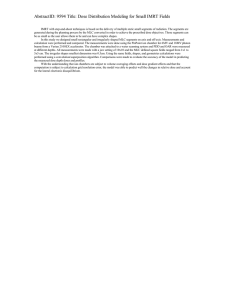AbstractID: 6820 Title: Optimisation of IMRT under constraints for static... delivery Commonly, the fluence profiles produced by an inverse treatment planning...
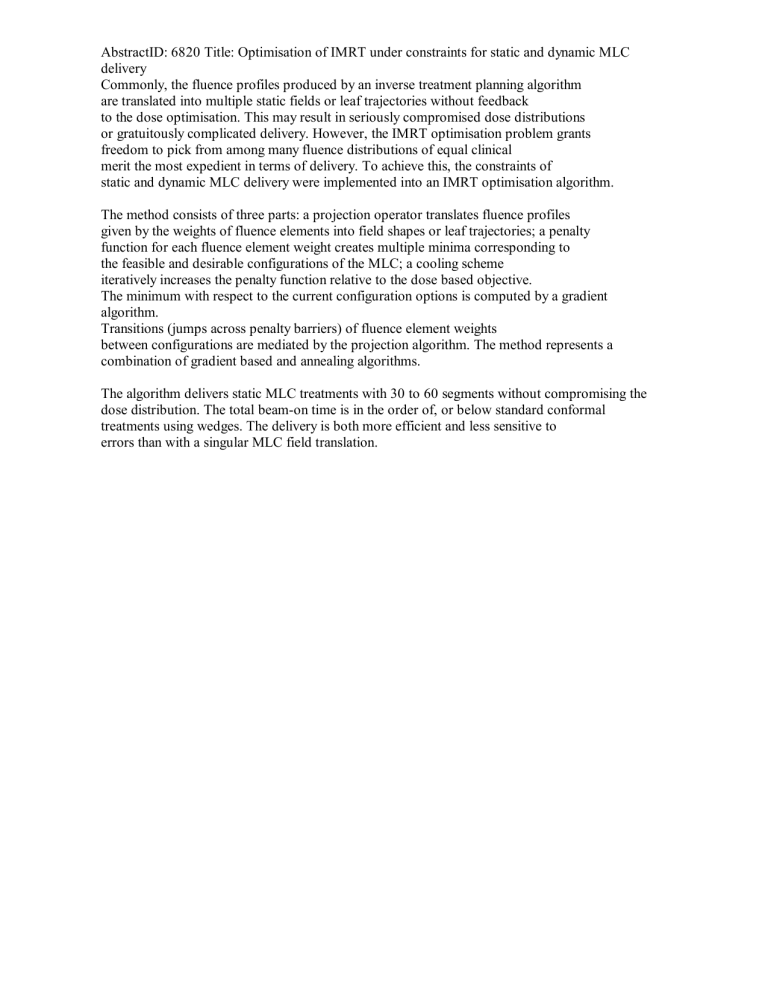
AbstractID: 6820 Title: Optimisation of IMRT under constraints for static and dynamic MLC delivery
Commonly, the fluence profiles produced by an inverse treatment planning algorithm are translated into multiple static fields or leaf trajectories without feedback to the dose optimisation. This may result in seriously compromised dose distributions or gratuitously complicated delivery. However, the IMRT optimisation problem grants freedom to pick from among many fluence distributions of equal clinical merit the most expedient in terms of delivery. To achieve this, the constraints of static and dynamic MLC delivery were implemented into an IMRT optimisation algorithm.
The method consists of three parts: a projection operator translates fluence profiles given by the weights of fluence elements into field shapes or leaf trajectories; a penalty function for each fluence element weight creates multiple minima corresponding to the feasible and desirable configurations of the MLC; a cooling scheme iteratively increases the penalty function relative to the dose based objective.
The minimum with respect to the current configuration options is computed by a gradient algorithm.
Transitions (jumps across penalty barriers) of fluence element weights between configurations are mediated by the projection algorithm. The method represents a combination of gradient based and annealing algorithms.
The algorithm delivers static MLC treatments with 30 to 60 segments without compromising the dose distribution. The total beam-on time is in the order of, or below standard conformal treatments using wedges. The delivery is both more efficient and less sensitive to errors than with a singular MLC field translation.
